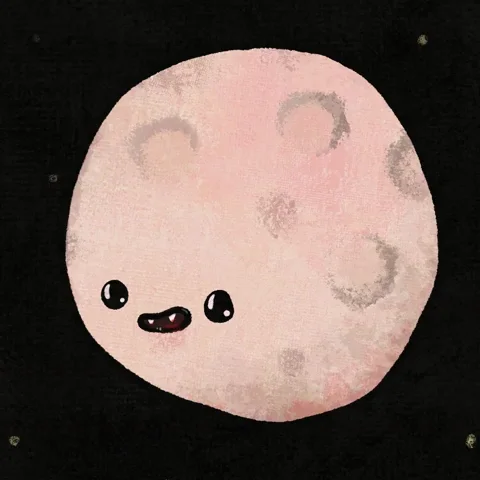Alien Burps, Cosmic Oceans & A Planet That Might Be a Giant Jacuzzi
Imagine a planet 124 light-years away that might be bubbling with life—minus the WiFi and coffee shops. Enter K2-18b, a mysterious exoplanet hanging out in the constellation Leo, now famous for potentially leaking signs of… something alive.

Thanks to the amazing peepers of the James Webb Space Telescope (JWST), scientists spotted molecules in its atmosphere that, on Earth, only show up when life is around. So naturally, the science community collectively lost its hydrogen molecules.
🌊 What’s a Hycean Planet?
(Besides sounding like a Pokémon)

K2-18b belongs to a category of exoplanets called Hycean planets—a term combining “hydrogen” and “ocean.” These are worlds with:
- A hydrogen-rich atmosphere
- A liquid water ocean beneath
- Temperatures that can be just right for life (not too hot, not too “freeze your atoms off”)
Unlike Earth-like planets, which are small and hard to study, Hyceans are big (K2-18b is 2.6x Earth’s radius and 8.6x the mass) and gassy—which, for astronomers, is a good thing. Their puffy atmospheres make them easier to scan for molecules.

🔭 How JWST Did Its Space Magic
Using spectroscopy, JWST looked at starlight passing through K2-18b’s atmosphere as it transited in front of its star. Think of it like a cosmic fingerprint scanner. Different gases absorb light at different wavelengths, and JWST picked up:
- Water vapor (H₂O) 💧 – Suggesting a moist atmosphere
- Methane (CH₄) 💨 – Usually made by microbes or volcanoes
- Carbon dioxide (CO₂) 🫧 – Important for greenhouse warmth
- Possible Dimethyl Sulfide (DMS) and Dimethyl Disulfide (DMDS) – 🧬 Only made by life on Earth (cue dramatic music)

This was the first time carbon-bearing molecules were clearly observed in a habitable-zone exoplanet atmosphere. That’s like hearing someone shout from across the universe: “Hey! This planet might have chemistry like ours!”
💨 DMS: The “Alien Breath” Molecule?
DMS is a gas that, on Earth, is primarily produced by plankton in the oceans. It’s like a chemical “hello” from microscopic sea life. JWST may have picked up DMS on K2-18b—though at only 3σ confidence (think: 99.7% sure, not 100%).

That might sound strong, but in science, we like things to be 5σ (like, “the odds of us being wrong are one in 3.5 million” strong).
Still, DMS is exciting because it has no known non-biological source on Earth. So if we do confirm it’s there on K2-18b, we might be sniffing the burps of extraterrestrial microbes.

👨🔬 But Hold Up! Could It Be Non-Biological?
Yes—aliens are fun to imagine, but science demands
evidence > excitement. Other possibilities include:
- Volcanic activity releasing methane and other gases
- Photochemical reactions making DMS-like molecules in exotic ways
- Instrument noise or statistical flukes (science’s version of ghost stories)
Dr. Nikku Madhusudhan from Cambridge, who led the study, said it best:
“It’s an exciting hint, but far from confirmed. We need repeated measurements and independent checks before calling it a biosignature.”

🌌 Fun Fact: The Star of the Show
K2-18b orbits a red dwarf star called K2-18, which is:
- Smaller and cooler than the Sun 🌞
- A bit unstable—sometimes throwing stellar tantrums (aka flares)
- Close enough for its planet to be in the habitable zone (where liquid water could exist)
Despite being so close to its star (much closer than Earth is to the Sun), K2-18b stays mild thanks to its atmosphere and possibly oceanic insulation.
🚀 What’s Next?
This isn’t the end—it’s the trailer. Coming soon:
- More JWST observations using different instruments like MIRI
- Cross-checks with other telescopes, including future ones like the Habitable Worlds Observatory (HWO)
- Better lab simulations to test whether gases like DMS can be made without life
- Comparisons with other Hycean planets to look for trends or oddballs
Also on the cosmic calendar: NASA’s Europa Clipper will explore another ocean world (on Jupiter’s moon), and scientists are still arguing over phosphine on Venus.

🧠 TL;DR — Did We Just Find Aliens?
Not yet. But we may have found the weird cousin of Earth who’s whispering back at us through chemistry. If these results hold up, K2-18b will become the first exoplanet where we detect actual biosignatures—the holy grail of astrobiology.
So maybe, just maybe, we’re not alone.
Or the universe is just teasing us again. 😅



One response to “K2-18b: The second earth?!”
Nice article